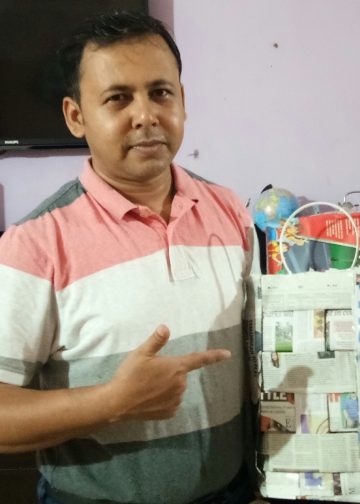By Swastik Suman Satapathy
Gold’s glow witnessed a dream run through most of 2025, with prices soaring to record highs ahead of Diwali as investors rushed to capture the rally. However, soon after the festive peak, the yellow metal saw a sharp correction, reminding investors that even the safest-seeming assets can fluctuate.
Against this backdrop, interest in modern, convenient forms of investing in gold, such as Gold ETFs and digital gold, has skyrocketed. These digital avenues, often called “Gold 2.0,” have opened doors for tech-savvy Indians to invest in gold with just a few taps on their smartphones.
Gold ETFs (exchange-traded funds) are listed and traded on stock exchanges. They hold physical gold and issue units that move with the metal’s price. Investors can buy or sell units like any stock through a broker. Recently, India witnessed a significant rise in Gold ETFs, with investments growing 578.28 per cent year over year, reaching ₹8,363.13 crore in September 2025 — up from ₹1,232.99 crore in the previous year.
Digital gold, on the other hand, is offered by fintech apps and platforms that let investors buy small fractions of physical gold online. The purchased gold is credited to an account and stored in vaults by the provider on behalf of the investor. Buyers can start with as little as a few rupees, and some platforms also allow holdings to be converted into jewelry or delivered physically for an extra charge.
Recent years have seen explosive growth in digital gold users and transactions. As per a recent report, UPI transactions in digital gold rose from approximately 50.9 million in January 2025, with a value of ₹761.6 crore, to 99.8 million in August 2025, when the total value increased to ₹1,283.7 crore.
Traditional gold in tangible form — jewelry, coins, bars — remains emotionally significant for many Indian households but carries making charges (for jewelry), storage worries, and lower liquidity. Gold ETFs and digital gold eliminate these concerns, offering a more practical, cheaper, and safer alternative than storing jewelry at home.
Digital gold typically includes GST on purchase, in addition to delivery fees, while ETFs have an annual expense ratio (typically under 1 per cent in India), plus brokerage and management fees, which make them slightly costlier in comparison. However, if an investor in digital gold opts for conversion into physical form or delivery, the process involves additional cost and time.
Tax treatment differs slightly between the two. Gold ETFs, after the April 2023 tax change, are treated like any other debt mutual fund — meaning any gain, regardless of holding period, is added to income and taxed at the investor’s slab rate, with no long-term capital gain or indexation benefits. Digital gold, on the other hand, is considered digital ownership of physical gold, so profits made within three years are taxed as short-term gains, while holdings beyond three years qualify for long-term capital gains tax with indexation.
From a cost and tax perspective, digital gold enjoys a relatively more favorable position. Its high convenience and accessibility — allowing even small or one-time investors to buy tiny quantities through mobile apps — have further boosted its popularity. However, the biggest advantage of Gold ETFs lies in their regulatory oversight, as they operate under the direct supervision of SEBI, ensuring greater investor protection, transparency, and standardization. In contrast, digital gold lacks a formal regulator, and investor safety largely depends on the credibility and operational integrity of the provider platform.
Apart from being a traditional status symbol, gold remains a time-tested hedge for Indians against liquidity crunches and financial risks. But it is also subject to market fluctuation, at least in the short run. So, the choice of gold form must be made carefully, depending on an investor’s financial goals, investment horizon, need for liquidity, and risk tolerance.
The writer is Assistant Professor of Commerce, JKBK Government College, Cuttack






































